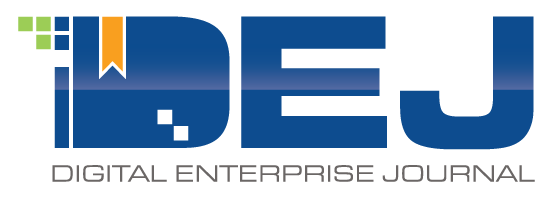The IT Operations technology market is fairly heterogeneous and is consisted of solutions that are built on different underlining technologies, focused on a different set of issues, being leveraged in different use cases and using different approaches to provide value to end users. It includes more than 100 different vendors, and what they all have in common is to make sure that IT and other technology services are delivered at the highest quality of user experience. Given the level or diversity between different IT Operations solutions, IT Operations is not a technology market, but a concept that is currently centered around different technology approaches for IT monitoring, analytics, automation and knowledge management.
IT Operations has been going through a lot of changes over the last two to three years and that pace of transformation has been constantly accelerating at an exponential rate. Digital Enterprise Journal (DEJ)’s 2018 research study, 17 Areas Shaping the Information Technology Operations Market, showed that “IT Operations has become an analytics, automation and data management game”, which is a major departure from how these technologies were traditionally positioned. Our resent survey research revealed that IT Operations is changing even more drastically, to the point where we should reassess how we think about these solutions and about the whole concept of IT Operations Management. Some of the key findings from this research include:
1 – Solutions are increasingly being evaluated based on their impact on business outcomes
2 – The value of these technologies goes well beyond IT Operations and includes business executives and professionals, DevOps, security operations, site reliability engineers (SREs), IoT professionals, etc.
3 – New technologies that require different approaches to be managed are entering the enterprise at a very fast pace and “crossing the chasm” faster
4 – Digital transformation is redefining processes and job role responsibilities while making the lines between different organizational groups more blurry
5 – Increased focus on customers (both external and internal) is causing: 1) higher expectations for user experience; 2) the emergence of the Customer Centric IT concept where the customer is the focal point of all IT initiatives
6 – Organizations are increasingly realizing that they can use technology to create competitive advantage and improve responsiveness to the market changes which causes: 1) increased complexity of IT environments to be managed; 2) rapid changes in capabilities needed for supporting business needs; 3) getting IT services and applications to the market faster and seamlessly becoming a critical requirement.
7 – From the vendors side, innovative technology approaches are entering the market and, even though they are also addressing the needs of IT Operations, provide value that spans across multiple other areas of IT and business.
“organizations are replacing their IT Operations management solutions at a rate that is 3.1 times faster as compared to 2013. This is mostly due to the fact that new technologies which need to be managed are entering the enterprise much faster”
Digital Enterprise Journal – “10 KEY THINGS TO CONSIDER WHEN DEFINING A MODERN IT OPERATIONS STRATEGY”
With all these changes, going forward, the term “IT Operations” will increasingly be used to describe just a use case, not a technology market focused on deployment, delivery and management of digital services that is centered around customer experience and driving business outcomes.
So what is the market that the IT Operations transformed into?
The IT Operations market, the way it is currently defined, consists of multiple submarkets. Some of them are more mature and better defined , such as Application Performance Monitoring, and some are still evolving and are at the stage of being a concept rather than a market category that includes direct competitors (AIOps, for example).
However, the way that technologies have been evaluated and positioned, it was always important to define the name of the market where a specific solution plays, for vendors and end users alike. For vendors, it is important for positioning purposes as well as for optimizing their marketing spend, as it is always more cost effective to associate their solution with a term that is known and accepted in the market, as opposed to coin and market their own. For end users, it is easier to know in which technology “bucket” they are looking at when evaluating different solutions as it reduces the amount of research that they have to do in the process of evaluating technology solutions.
DEJ’s 2017 article Vendor Landscape for Modern IT Operations – Death of Acronyms shows that, due to the amount of changes and innovation in this space, most of the vendors providing capabilities that are best aligned with practices of top performing organizations, currently do not squarely fit into a predefined technology category. They probably never will. Even with the introduction of AIOps, that issue doesn’t get fully addressed, as it already includes vendors that don’t have a lot in common and never compete against each other (many of them actually complement each other or are even partnering together).
Looking at the current submarkets of IT Operations, it is hard to find more than 3-4 vendors that are true direct competitors (other than very large vendors that cut across most of the functional areas). Even emerging vendors that are focusing on incident management, notifications or advanced analytics use different approaches, play different roles in organizations and sometimes coexist with each other. Examples include vendors such as BigPanda, Moogsoft and Loom Systems on one side, or PagerDuty and vendors such as VictorOps (Splunk), xMatters or Everbridge on the other side.
So going back to the previous question – what is the name of the market that the IT Operations transformed into? The short answer is – it doesn’t really matter. What matters more is that the market has the following attributes:
- Enabling deployment, delivery and management of digital services with key focus on user experience and business value
- Support of launching new digital services with shortest time to market and optimal use of resources
- Solutions included are focused on enabling customer-centric IT
- Categories and submarkets are determined by business problems that organizations are trying to solve
- Differentiation, strengths and weaknesses are defined by the ability to contribute to business outcomes
- Core functions are based on advanced information, automation and data and knowledge management concepts
- Proactive approach for managing delivery of digital services at high user experience
The technology market defined based on these attributes is well positioned to support rapid changes in the technology and business worlds. Consequently, this market can become a key enabler of digital transformation and redefine the role that IT plays in the enterprise.













